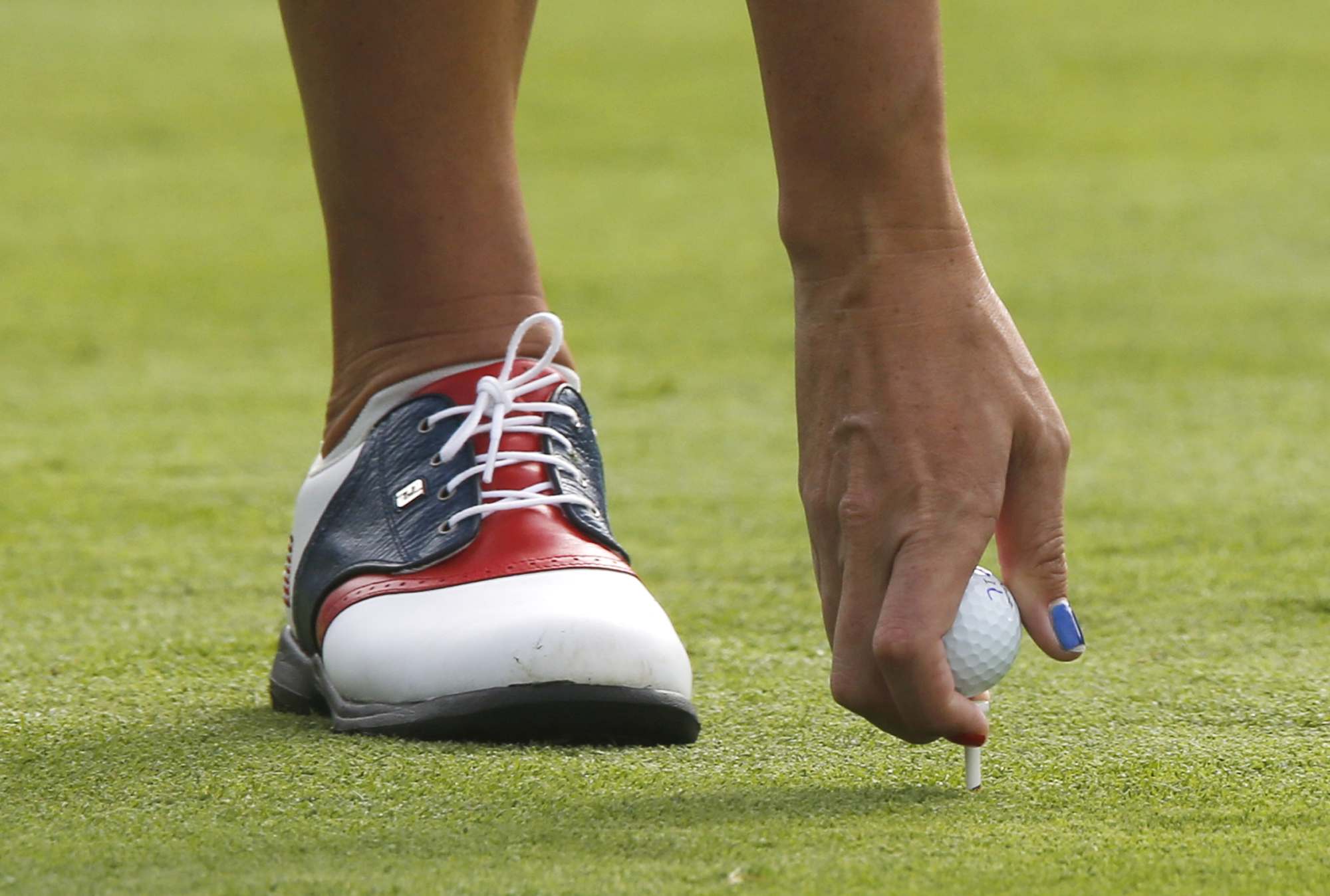Golf is infamous for causing a lot of frustration. There's nothing like having a perfectly good walk spoiled by a white ball. Luckily, all is repaired by that one, perfectly arching drive or birdie putt.
Whether you’re an avid player or a novice, before stepping on the green, it's a good idea for everyday claims pros to become familiar with the sport. What would the value of Bubba Watson’s sand wedge be if it were bent at the hosel? Values can run high, and even experienced golfers may not know how to value or identify the various types of clubs; what’s custom or hybrid, what came as a set, or what was purchased separately.
A brief history of golf
According to the International Golf Federation (IGF), the sport of golf can be traced back as far as 100 BC, to the Roman game called Paganica, in which players used a bent stick to hit a stuffed leather ball. Sometime between the years 960 and 1279, the ancient Chinese game of Chuíwán (word for ball-hitting) was born. Chuíwán has many similarities with modern golf, but the IGF claims it wasn’t until 1744 that the first rules of golf were set into play by Edinburgh golfers.
Key value factors for golf clubs
A typical set of golf clubs usually includes irons, a driver, fairway woods, wedges and a putter—all of which are often kept together in a golf bag. For field adjusters, it’s important to record the quantity of each item found in the golf bag. Golf “sets” can be purchased in a number of different configurations. Some manufacturers offer a “full set” including a driver, a 3 and 5 fairway wood, 9 irons, a putter, and quite often, a bag. Other configurations include individually purchasing the driver and woods, a set of nine irons, putter and bag. Getting as much information up front from the policyholder will help alleviate the complexity.
If the purchase configuration is unknown, it’s best to list items as separate lines—and don’t forget accessories, as some may add considerably to the value. Note the manufacturer’s name and club model information, which can usually be found on the head of the club.
Brand is one of the major key value factors when evaluating clubs. Common brands include Callaway, Ping, Hippo and Wilson, to name a few.
There are three major areas of the golf club itself that are relevant key value factors: the grip, where one holds the club; the shaft, which is the area between the grip and the hosel; and the head, which is the portion of the club that makes contact with the ball. The hosel is the connecting elbow between the shaft and the head.

Jason Day, right, of Australia, looks over his shot from the rough with caddie Colin Swatten on the 10th fairway, during the first round of the BMW Championship golf tournament at Conway Farms Golf Club, Thursday, Sept. 17, 2015, in Lake Forest, Ill. (AP Photo/Charles Rex Arbogast)
Drivers
Drivers are meant for long distance shots, and come in a variety of head designs, materials and shafts. These clubs are typically designated by degrees in loft.
Fairway woods
Similar to the driver are fairway woods which are typically represented by an odd number ranging from 3-11; the most common being the 3, 5 and 7 woods. Some manufacturers have a 4 wood in their model lines, but most woods are denoted as odd-numbered clubs.
The good news for claims pros is that most of the information needed is usually found right on the head (the face that strikes the ball) of the club, including the brand, model name, and the degrees, which designates the loft of the club or the degrees the club face is off of a plumb vertical plane.
Irons and wedges
Irons and wedges are very similar in appearance and are often used as interchangeable terms. Irons have numeric designations from 1-10, although the 1, 2 and 10 are becoming less common. A typical set of irons includes about seven clubs from 3-9 for men, and six clubs from 4-9 for women. Men’s sets will typically include a pitching wedge, and women’s, both pitching and sand wedges. Unlike irons, wedges are generally referenced by either a letter, or the degrees in loft of the club. Examples include a “P” for a pitching wedge and “S” for a sand wedge.
On a par 3 hole off the fairway, the player has three chances to make par with the expectation that two of the golf shots are putts. While golf ranges are popular places where golfers go to practice their long drives with a $10 bucket of balls, it’s the putter that gets the most action among all the clubs in a bag.

United States' Michelle Wie concentrates in the singles on Day 3 at the Solheim Cup golf tournament in St. Leon-Rot, southern Germany, Sunday, Sept. 20, 2015. (AP Photo/Jens Meyer)
Putters and shafts
There are two main design types of putter heads: blade and mallet, with many ranges, sizes and variations in between. Adjusters should note the information found on the club head and the length of the shaft. Shaft length is important to a putter’s replacement value. The shaft is measured from the bottom of the club head in-line with the shaft to the top of the shaft. They can range from 33” to over 50” with longer ones potentially being worth more money.
Manufacturers continue to experiment with adding different alloys and metallurgic mixes to clubs, so it’s important to make note of the material used, whether its stainless steel, graphite or other.
Average graphite shafts can increase the value of a club from $25-$50, depending on the brand of club. Each of the club graphite shafts could add as much as $600 to the value of a set. There are graphite shafts that can cost as much as $400 each, which is why it’s crucial to obtain as much information about the clubs as possible.
If you come across a set of clubs, or a single one made from wood, it's important to note the model and any information available and take photos—there's a chance that they are antiques.
Both steel and graphite shafts are graded for flexibility which is a measure of stiffness, or lack of stiffness. Some common grades are noted as letter designation such as R for regular flex and XS or ES to denote extra stiffness. There are also flexes specific to women, senior and junior golfers. If the flex grade is not available, it will generally not affect the settlement value; however, if replacement is ever a possibility, knowing the flex would be an advantage.

United States' Brittany Lang puts her ball on the tee in the four ball match on Day 1 of the Golf Solheim Cup in St. Leon-Rot, Germany, Friday, Sept. 18, 2015. (AP Photo/Michael Probst)
Getting a grip
Most clubs come equipped with a standard grip. It’s sometime difficult to determine if the grip on the club you're inventorying is from the manufacturer since the insured may have re-gripped the clubs by purchasing a kit, or had them re-gripped at the local pro-shop. Wherever possible, speak with the insured if there is any doubt, as the addition of custom leather grips can add tremendous value—upwards of $700, to a standard set of clubs.
Golf bags
There are two main types of golf bags: carry bags and cart bags, with varying differences. Cart bags are carried around by a bag cart. Carry bags can either be a stand bag, which allow the bag to stand on its own usually with retractable legs. There are Sunday bags, which are usually smaller in size and used to carry a small number of clubs. There are also staff bags, which are large enough to carry a full set of clubs and aimed at someone who uses a golf cart when playing.
For the most part, golf bags are made of synthetic materials such as heavy grade nylon and vinyl. A typical error when inventorying is identifying the item as a ‘Callaway leather golf bag.’ Manufacturers such as Callaway, Titleist and Taylor Made, for the most part, don't make leather golf bags; their high grade vinyl can appear to be leather at a glance.
There aren't too many manufacturers making leather golf bags, so if there is an insured claiming their bag is leather, try to obtain a brand name and model if possible, as actual leather bags can run up to $4,000 for a Pellevera leather designer bag.
Golf balls
Golf balls usually come in predetermined quantities, such as a sleeve (includes 3 balls) or a box (includes 12-15 balls). Brand and model are crucial key value factors for balls. The core is the inner of the ball, and the cover is the outside covering. There are nearly infinite combinations of core and cover, some even custom made. Wherever possible, a close-up photo of the ball itself will prove a tremendous help.
Some insureds will claim a bucket of balls with no idea as to the quantity of balls or size of the bucket. If this occurs, count the number of balls, or try to agree on a quantity with the insured so a fair settlement can be reached. Without it, the valuation specialist must either evaluate it as a single box or ask for more information.
Aside from the clubs themselves, the most common items you may find in a golf bag include gloves, shoes, tees, a golf ball retriever (for when the ball lands in water), a towel and sometimes an umbrella.
Each of these items can add value, from a very inexpensive bag of tees, to a $500 pair of pink golf shoes. Following typical claims protocol, make note of brand and model and include a photo wherever possible.
Now, is anyone in the mood to play a round?
Dave Moe is a sales engineer for Enservio, a leading provider of contents claim software, payments solutions, inventory and valuation services for property insurers. He has more than 30 years of golf experience and has worked in the field of contents insurance for 10 years.
Want to continue reading?
Become a Free PropertyCasualty360 Digital Reader
Your access to unlimited PropertyCasualty360 content isn’t changing.
Once you are an ALM digital member, you’ll receive:
- Breaking insurance news and analysis, on-site and via our newsletters and custom alerts
- Weekly Insurance Speak podcast featuring exclusive interviews with industry leaders
- Educational webcasts, white papers, and ebooks from industry thought leaders
- Critical converage of the employee benefits and financial advisory markets on our other ALM sites, BenefitsPRO and ThinkAdvisor
Already have an account? Sign In Now
© 2024 ALM Global, LLC, All Rights Reserved. Request academic re-use from www.copyright.com. All other uses, submit a request to [email protected]. For more information visit Asset & Logo Licensing.







